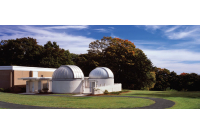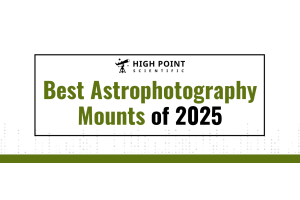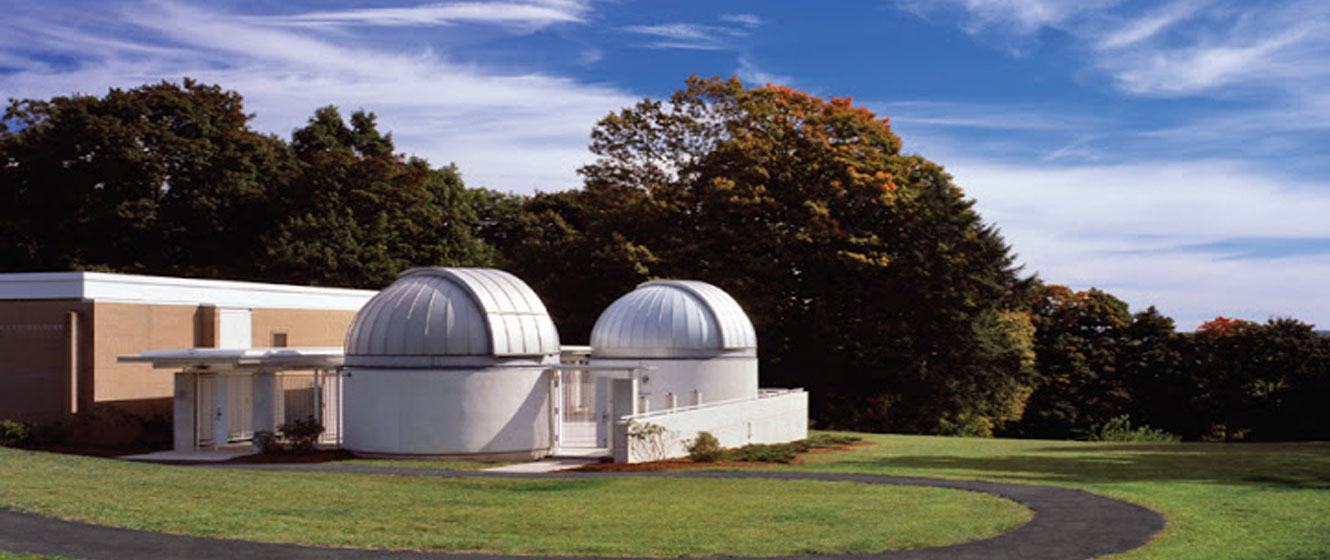
Observatories are home to some of the biggest and most impressive telescopes in the world. As many amateur astronomers know, there are numerous ways to experience the night sky beyond looking through a telescope in your own backyard. Connecticut has an impressive number of observatories that offer a wide variety of star parties, tours, and observatory programs that will expand your knowledge of astronomy and your love of the night sky, whether you are new to astronomy or have been in the hobby for years.
For your convenience, we have compiled an alphabetical list of observatories in Connecticut that offer programs for the public.
Disclaimer: This information was collected from the observatories’ websites in February 2022. Some information may be subject to change if the websites are updated. If interested in visiting one of the listed observatories, please contact the observatory for the latest information before you visit.
Bowman Observatory
Greenwich, CT - Contact: [email protected]
A science teacher, Alden W. Smith, from Greenwich High School, built the Bowman Observatory in 1940 as a teaching facility, though it eventually closed. Once the Astronomical Society of Greenwich took over the long-abandoned observatory in 1984, the observatory was reopened in 1986 to be used by the high school students and the public. It is located in Greenwich, Colorado.
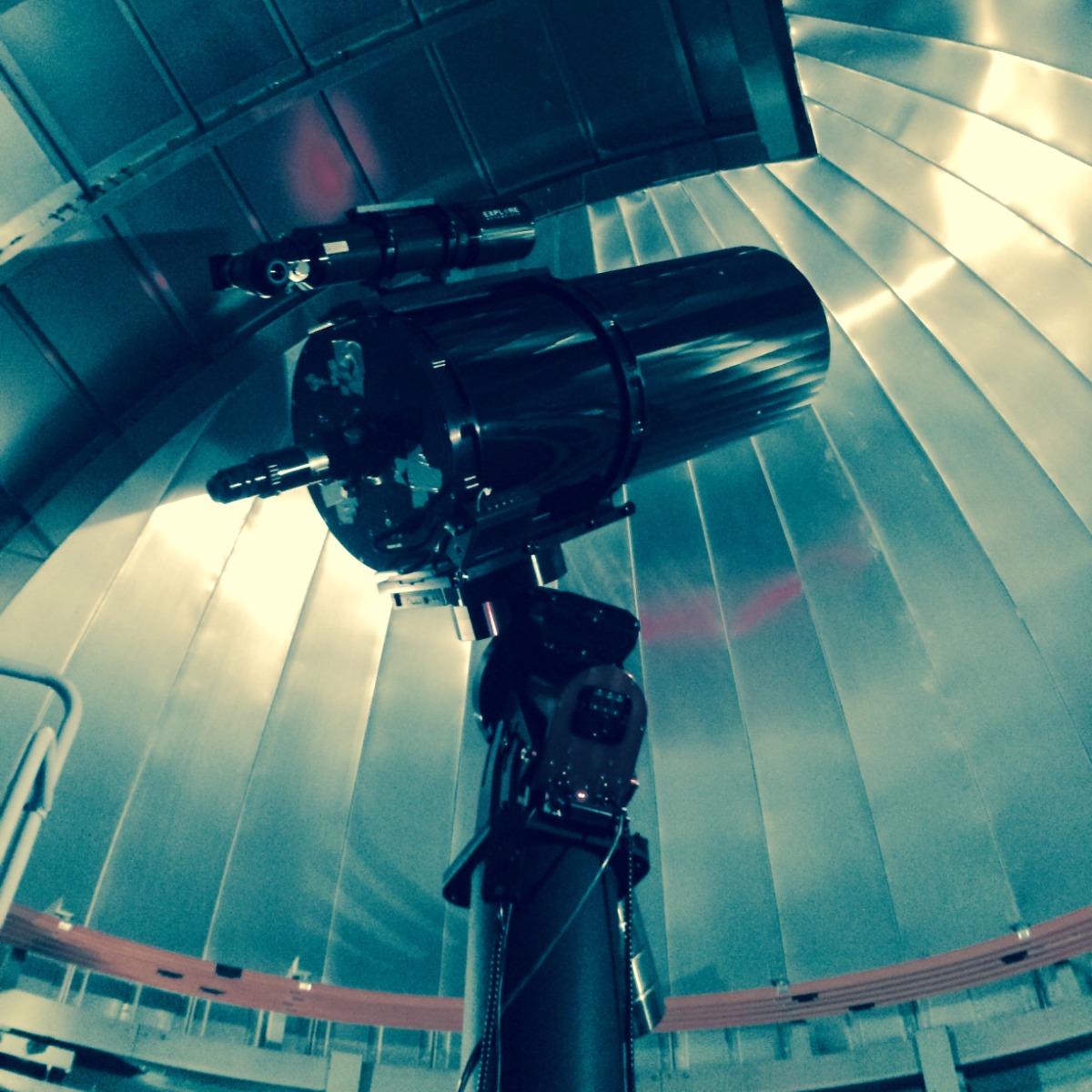
Image Credit: Astronomical Society of Greenwich
Telescopes
The Bowman Observatory is home to a 12.4” Newtonian Reflector telescope, named after Alden W. Smith, and an RCOS Carbon Truss 16” Ritchey-Chrétien f/8.4 telescope.
Visiting
The observatory is open to the public, free of charge, twice a month, and for special astronomy-related events. It is open on the 1st and 3rd Wednesdays of every month (given the skies are clear) during the spring and fall from 8 pm to 10 pm, during the summer from 9 pm to 11 pm, and during the winter from 7 pm to 9 pm. Before embarking on a group visit, the observatory asks that they be contacted via email.
John J. McCarthy Observatory
New Milford, CT 06776 - Contact: 860-946-0312
Located on the campus of New Milford High School in New Milford, Connecticut, the observatory carries on the mission of John J. McCarthy to further science literacy, both for students and adults of the western Connecticut community. The observatory is operated by an all-volunteer staff dedicated to aiding people in exploring their excitement for science, math, and technology.
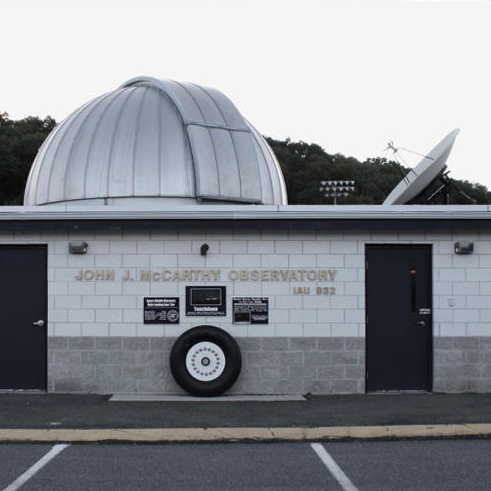
Image Credit: John J. McCarthy Observatory
Telescopes and Equipment
The McCarthy Observatory is home to many telescopes. These include a 16” Meade Schmidt Cassegrain on an equatorial mount, a 106mm Takahashi refracting telescope, a 5” Meade refractor, a Coronado solar telescope with a 90mm Coronado solar filter set, 7” and a 3.5” Questar Maksutov-Cassegrain telescopes, a 14.5” truss-tube Dobsonian, and an 8” Orion Schmidt-Cassegrain telescope.
Visiting
This observatory has free admission and is open to the public every second Saturday of each month for public star parties. Every star party will have a new presentation given on an astronomy-related topic, and, if the weather allows, there will be telescopes available for public observation. For further information, reach out to [email protected].
Leitner Family Observatory
355 Prospect, New Haven, CT 06511 - Contact: 203-432-3000
Part of the Yale Department of Astronomy, this observatory and planetarium is dedicated to student research, education, and public outreach. It is located in New Haven, Connecticut.
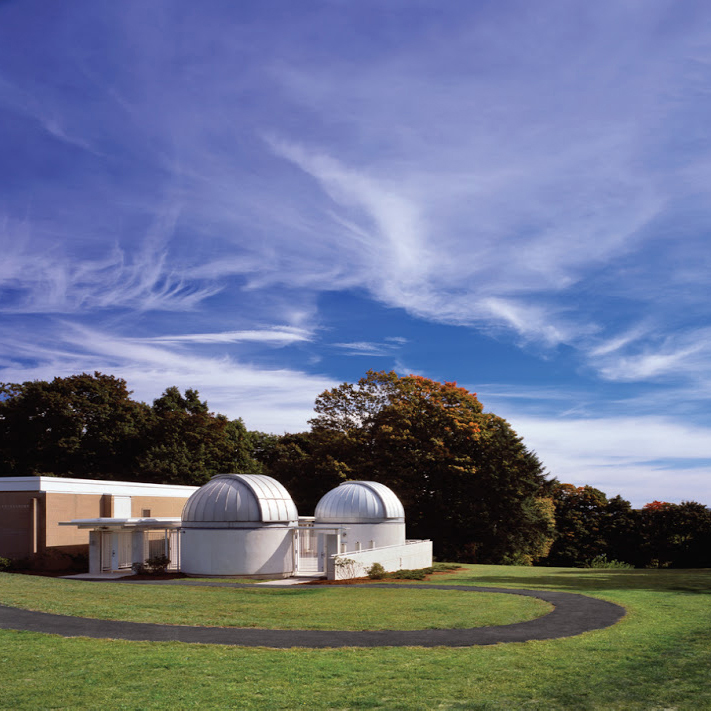
Image Credit: Eli Westman
Visiting
Every Tuesday evening, the Leitner Family Observatory and Planetarium offers shows in the planetarium theater. After the show, if the weather allows, visitors can look through one of the observatory’s telescopes to observe the night sky. Admission is free for children under 13 and Yale students.
Rolnick Observatory
182 Bayberry Ln, Westport, CN 06880 - Contact: 203-227-0925
During the mid-1960s, Charles Scovil, a well-known amateur astronomer, and Rufus Morton, a science teacher, came together to discuss building an observatory. After the building was completed, there were several years where the observatory went with little use and it was vandalized, and parts were stolen. It even once had bullets fired through the dome, luckily missing the telescope mirror. It wasn’t long until two men, Fred Bump and Jerry Lasley, stepped in and decided to get it working again. By 2005, it had been completely renovated and the mounts had been updated to a GoTo style. The Rolnick Observatory is located in Westport, Connecticut.
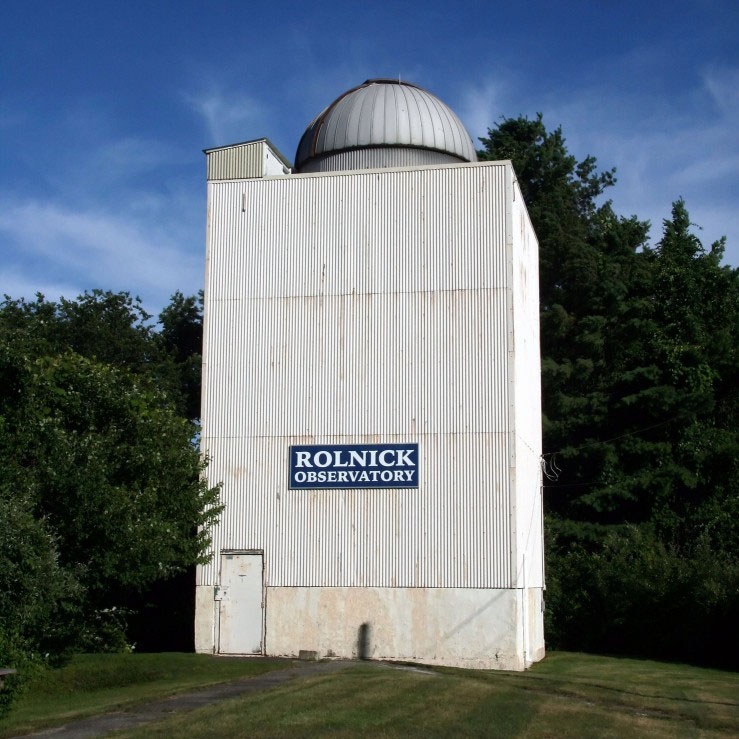
Image Credit: Westport Astronomical Society
Telescopes
The telescopes that live in the Rolnick Observatory are a 16” Meade LX200 with an Explore Scientific 102mm f/7 Essential ED Triplet Refractor piggybacked on top, a 25” Obsession Telescope (the largest telescope available to the public in Connecticut), various 8-10” Dobsonian telescopes, and a Lunt LS1000Tha double stacked solar telescope.
Visiting
The Rolnick Observatory is open to the public every Wednesday if the skies are clear. During the summer solstice, it gets darker later so visitors are advised to come after sunset. For further information, contact them at [email protected] or at 203-227-0925.
Stamford Observatory
151 Scofieldtown Rd, Stamford, CT 06903 - Contact: 203-977-6537
The Stamford Observatory is a part of the Stamford Museum & Nature Center located in Stamford, Connecticut. The observatory acts as a research facility used by the members of the Fairfield County Astronomical Society. As of February 2022, the observatory is closed to the public.
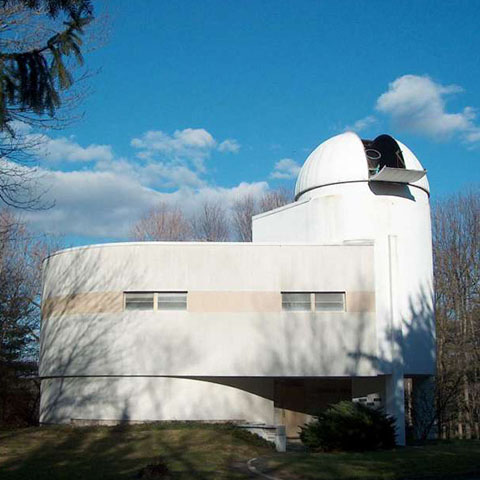
Image Credit: ctvisit.com
Telescope
The observatory features a 22” research telescope that has been recently updated with high precision components for its mechanism and electronics. The computer controls allow the observer to find any object in the sky and the telescope will track the location automatically.
Visiting
The Stamford Observatory offers Astronomy Nights to visitors on select Friday nights. They include talks on night sky objects and a presentation on various astronomical topics. The night will wrap up with a visit to the 22” telescope. The topics and events are outlined in the Center’s comprehensive Calendar of Events. There is an admission fee for non-members, and the observatory closes for various dates during the winter if the weather does not permit public observing.
For organized group visits, please contact the observatory, as they are not permitted at public viewings due to space limitations.
Van Vleck Observatory
96 Foss Hill, Middletown, CT 06459 - Contact: 860-685-2130
In 1836, President Fisk of Wesleyan University obtained a 6” refractor from a telescope maker in Paris. This became one of the first astronomical telescopes in New England. In 1903, a fund was started to build a new observatory, and ground broke in 1914. The official dedication was on June 16, 1916. It was then that the 20” Alvan Clark refractor and the 6” refractor were placed in the Van Vleck Observatory, and it has been operational ever since. The observatory is located in Middletown, Connecticut.
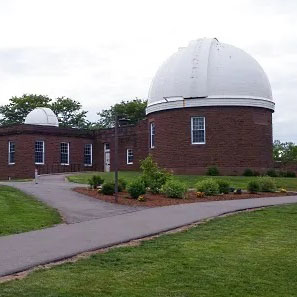
Image Credit: historicbuildingsct.com
Telescopes
The telescopes in the Van Vleck Observatory are a 24” Perkin research telescope, a 20” Alvan Clark great refractor, a 2.4m radio telescope, and a 16” Meade LX200GPS Schmidt-Cassegrain.
Visiting
The Van Vleck Observatory offers several different options when it comes to experiencing astronomy-related events. As of February 2022, all public events have been canceled until further notice.
Rain or Shine Space Nights: Every Wednesday night of the academic year at 8 pm the observatory will hold Space Nights. They are aimed at high school students or above, but all are welcome. The night starts with a thirty-minute interactive presentation followed by observation through an observatory telescope if the skies are clear.
Kids’ Night: Kids’ Nights happen on the 1st and 3rd Friday of the month at either 7 pm or 8 pm. A calendar is available on the website for those who wish to find specific start times. This program is aimed at elementary-aged children but is open to anyone who wishes to attend. The program consists of kid-friendly space-related events led by the Wesleyan University graduate and undergraduate students. Kids’ Night also allows for observing from the telescopes when the nights are clear.
Monthly Saturday Night Observing (Runs All Year Long): On one Saturday a month, the Astronomical Society of Greater Hartford (ASGH) organizes and hosts observing sessions with the refurbished 20” refracting telescope at the observatory.
Group Visits: The Van Vleck Observatory welcomes group visits from schools, scouts, or other similar groups. While they do not host private functions, day and night visits are possible. These group visits must be scheduled in advance and may be limited in size. Any group wishing to observe through a telescope is limited to 12 people, while daytime tours may be larger.
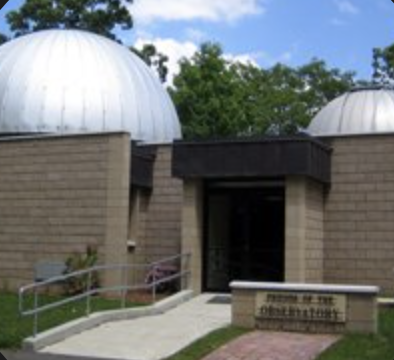
Image Credit: https://www.go-astronomy.com/
Westside Observatory
Lake Ave Ext #43, Danbury, CT 06811 - Contact: 203-837-8671
The Westside Observatory is located on top of a five-acre hill on Western Connecticut State University’s Westside campus in Danbury, Connecticut.
Telescope and Equipment
The Westside Observatory houses a 20” computer-controlled Ritchey-Chrétien reflector telescope that is dedicated to astrophysical research. The telescope is equipped with a thermoelectrically cooled CCD camera, and there are two CCD spectrometers available.
Visiting
The Westside Observatory has the WCSU Planetarium located in the observatory building. The planetarium seats forty people, and the Spitz A3p star projector is used for teaching and presenting science programs to scout and school groups. The observatory also hosts Public Nights on a regular schedule during the University’s spring and fall terms. The Public Nights are subject to cancellation if the weather is not clear.

Interested in finding an observatory or planetarium in your state? Check out our Astronomy Hub!
This Article was Last Updated on 08/15/2023





